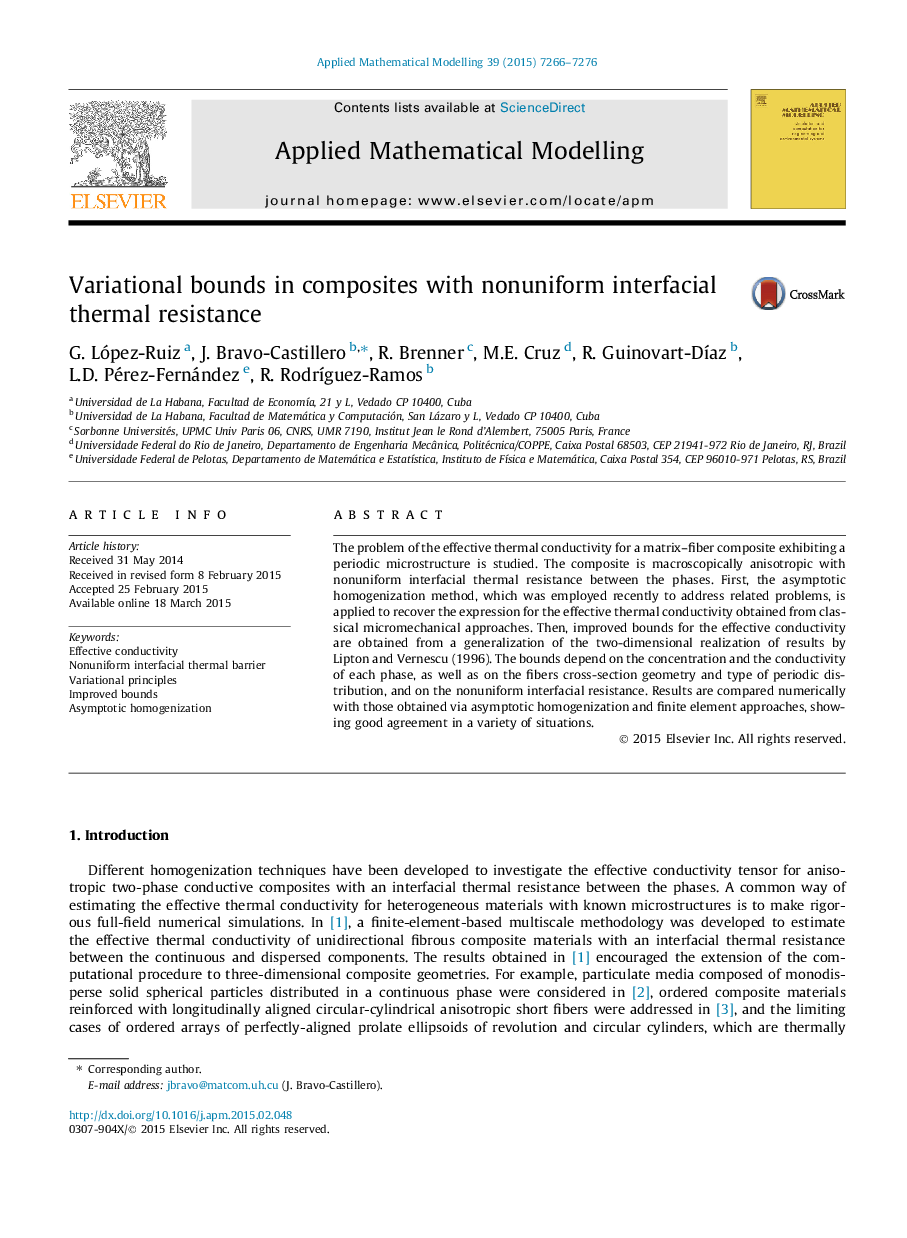| Article ID | Journal | Published Year | Pages | File Type |
|---|---|---|---|---|
| 1703000 | Applied Mathematical Modelling | 2015 | 11 Pages |
The problem of the effective thermal conductivity for a matrix–fiber composite exhibiting a periodic microstructure is studied. The composite is macroscopically anisotropic with nonuniform interfacial thermal resistance between the phases. First, the asymptotic homogenization method, which was employed recently to address related problems, is applied to recover the expression for the effective thermal conductivity obtained from classical micromechanical approaches. Then, improved bounds for the effective conductivity are obtained from a generalization of the two-dimensional realization of results by Lipton and Vernescu (1996). The bounds depend on the concentration and the conductivity of each phase, as well as on the fibers cross-section geometry and type of periodic distribution, and on the nonuniform interfacial resistance. Results are compared numerically with those obtained via asymptotic homogenization and finite element approaches, showing good agreement in a variety of situations.
